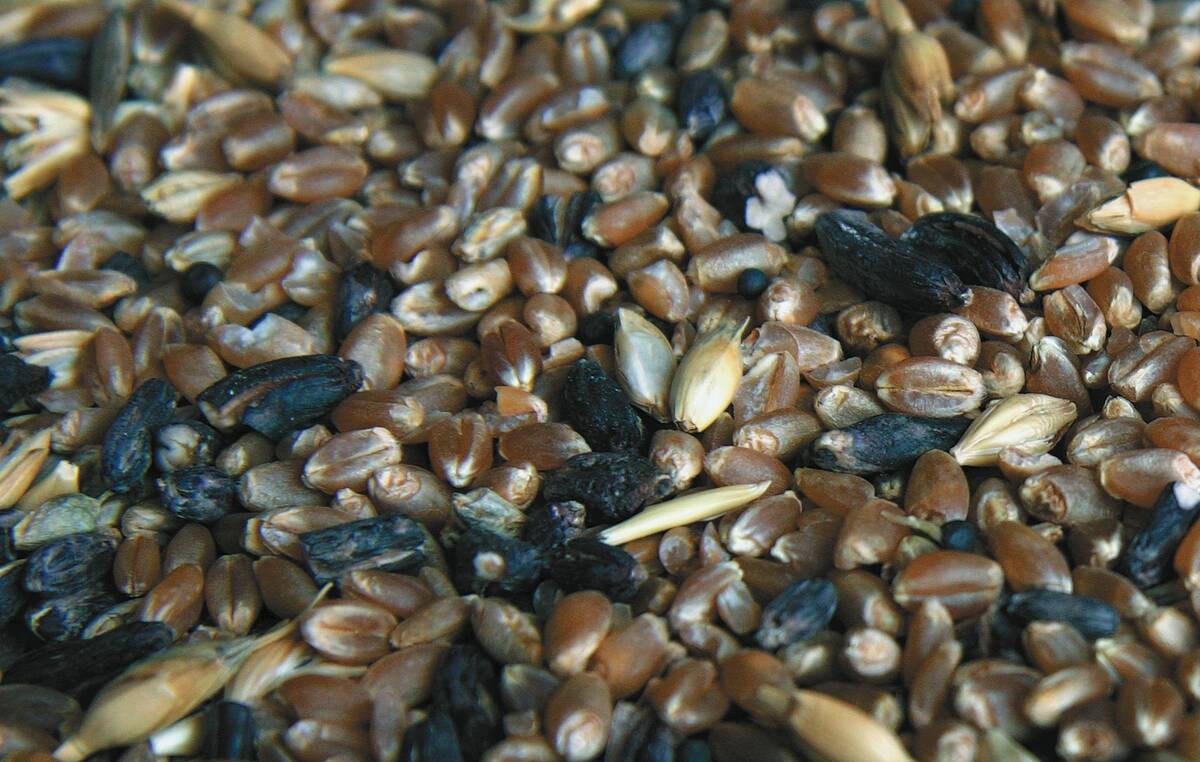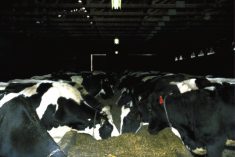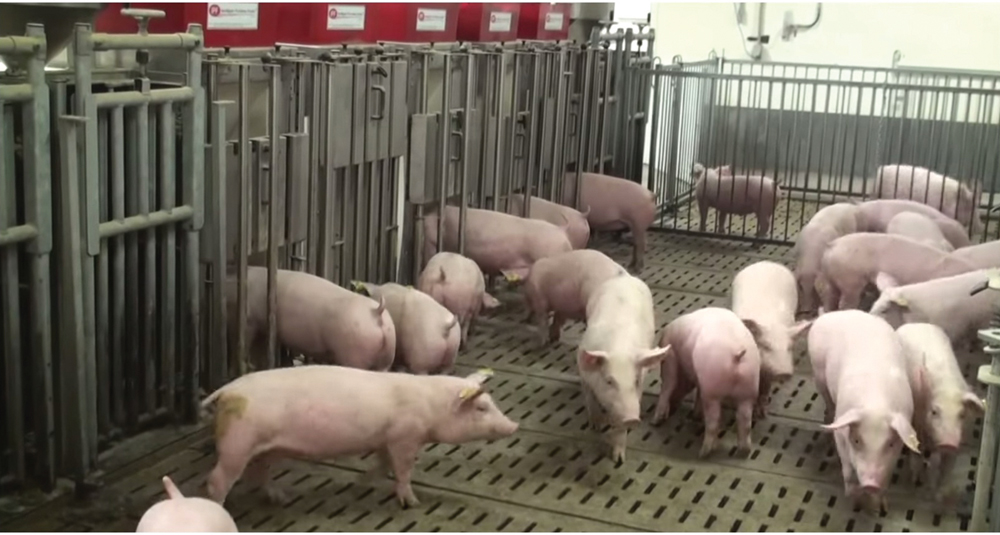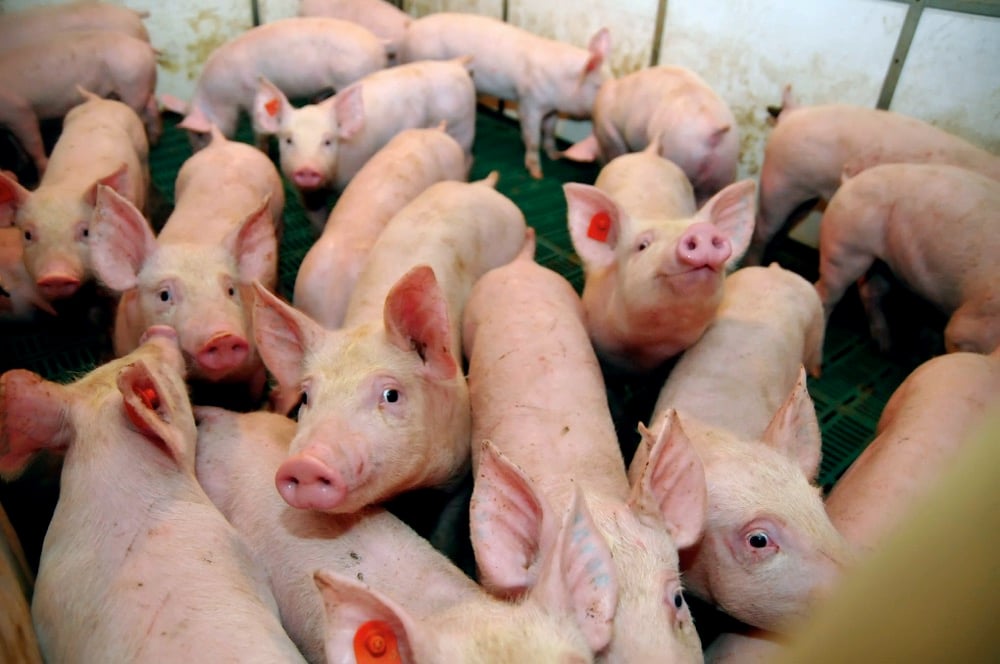Bernie Peet is president of Pork Chain Consulting Ltd. of Lacombe, Alber ta, and editor of Western Hog Journal. His columns will run every second week in the Manitoba Co-operator.
This year’s cool, wet weather not only delayed harvest, but also produced higher-than-normal incidence of fusarium mould in grain.
Producers are being warned that high levels of deoxynivalenol (DON), a vomitoxin, will lead to reduced feed intake and slower growth in nursery and finisher pigs. Researchers and nutritionists recommend grain samples be analyzed for the mycotoxin and action taken to ensure that the level in finished feed does not exceed one part per million.
Read Also

Feeding ergot: research on ergot-impacted grain and beef cattle continues
Saskatchewan research hopes to tease out better ways for Canadian beef farmers to manage ergot consumption in their herd’s feed
“Mycotoxins may be defined as toxins produced from moulds or fungi,” says Dr. Swamy Haladi of Alltech Canada. “These moulds can grow on various feedstuffs at different stages. It should be noted that moulds not only affect grains, but also other feedstuffs such as soybean meal, canola meal and straw.”
He notes mould growth can happen prior and during harvesting, and also while feed is being transported or stored.
“Apart from feedstuffs they can also grow on complete feed during manufacturing, transportation, storage and feeding,” he adds. “Therefore, the task of mycotoxin quality control does not stop at procuring good-quality grains or producing good-quality feed but also the proper storage of feedstuffs and feed.”
The most common symptom pigs show when fed DON-contaminated grain is a reduction of feed intake and a corresponding decrease in weight gain.
“Some decrease in feed intake will likely be seen if DON contamination exceeds one ppm (part per million),” says a recent fact sheet produced by the Prairie Swine Centre. “In research conducted at the Prairie Swine Centre, feed intake and daily gain of late nursery pigs decreased 9.1 and 5.2 per cent respectively, when pigs were fed diets containing 1.57 ppm DON for 22 days.
“Although pigs may vomit at high levels of DON contamination (20 ppm) it is more likely that they will refuse feed completely (12 ppm) before that occurs.”
Younger animals will be more severely affected than older ones, the fact sheet states.
“While the general recommendation for swine is to limit DON in diets for pigs of less than one ppm, a maximum of 0.5 is preferable for nursery pigs. While there doesn’t seem to be direct negative reproductive effects from feeding DON-contaminated diets to breeding stock, the reduced feed intake itself may be a problem. Therefore, DONcontaminated feeds should be avoided in diets for breeding stock whenever possible.”
When feed is contaminated with one type of mycotoxin another type will often also be present, according to the Prairie Swine Centre. For example, feed contaminated with DON can also be contaminated with zearalenone, another mycotoxin caused by fusarium.
“As with DON, zearalenone affects pigs more than other farm animals,” the fact sheet states. “Zearalenone has estrogenic effects and when present in the feed causes vulva enlargement in pre-pubescent gilts, as well as decreased litter size and infertility.”
The centre advises producers to keep zearalenone concentrations under 0.5 ppm in all pig diets and avoid using zearalenone-contaminated grains altogether in diets for breeding and replacement pigs.
The effects of mycotoxins are not always obvious in pigs, according to Dr. Haladi. He points out that a number of factors, such as the size of pigs, feed intake, health status and a range of management factors, can impact the magnitude of the effect on pigs.
“Depending on these factors, a pig can express signs of acute or chronic toxicity,” he said. “Acute toxicity is severe in nature such as complete feed refusal, mortality and abortions; however, this condition is not very common in the field.”
The most common form of toxicity in the field is chronic toxicity which results from the exposure of pigs to low levels of one or more mycotoxins over a long period of time, Haladi notes.
“This condition is generally manifested as poor immunity, reproduction and FCR (feed conversion ratio) as well as a delay in pigs reaching market weight,” he says. “The biggest challenge with such toxicity is the inability to identify the condition at an early stage thereby preventing economic losses.”
Testing for mycotoxins is advised because levels of DON as high as five ppm have been identified in this season’s grain. However, sampling needs to be carried out in the correct way to get an accurate result, the Prairie Swine Centre warns.
“It is difficult to get a good sample of grain to test for mycotoxin contamination,” the fact sheet states. “There is usually a great deal of variation in the amount of mycotoxin present from one area to another within a truck or bin. Therefore, it is easy to get false negatives or lower or higher values than is actually present in the overall grain. Combining small samples from several different areas will help you be sure that a representative sample has been obtained.”
Testing allows contaminated grain to be mixed with clean grain so that the level of mycotoxins can be kept within recommended levels. For sensitive stages of production such as nursery pigs and lactating sows, it is best to avoid mycotoxins in the diet.
“If possible, feed contaminated grains to less sensitive species and use clean grains in swine diets,” advises the centre. “Cleaning grain to decrease dust and small-shrivelled kernels helps lower the concentration of DON in the grain.”
It notes that there are no feed additives approved in Canada to decrease the impact of DON on swine.
———
bernie peetPeet onPigs
———
“DON-contaminatedfeedsshouldbeavoidedin dietsforbreedingstockwheneverpossible.”
– prairie swi ne centre fact sheet
















